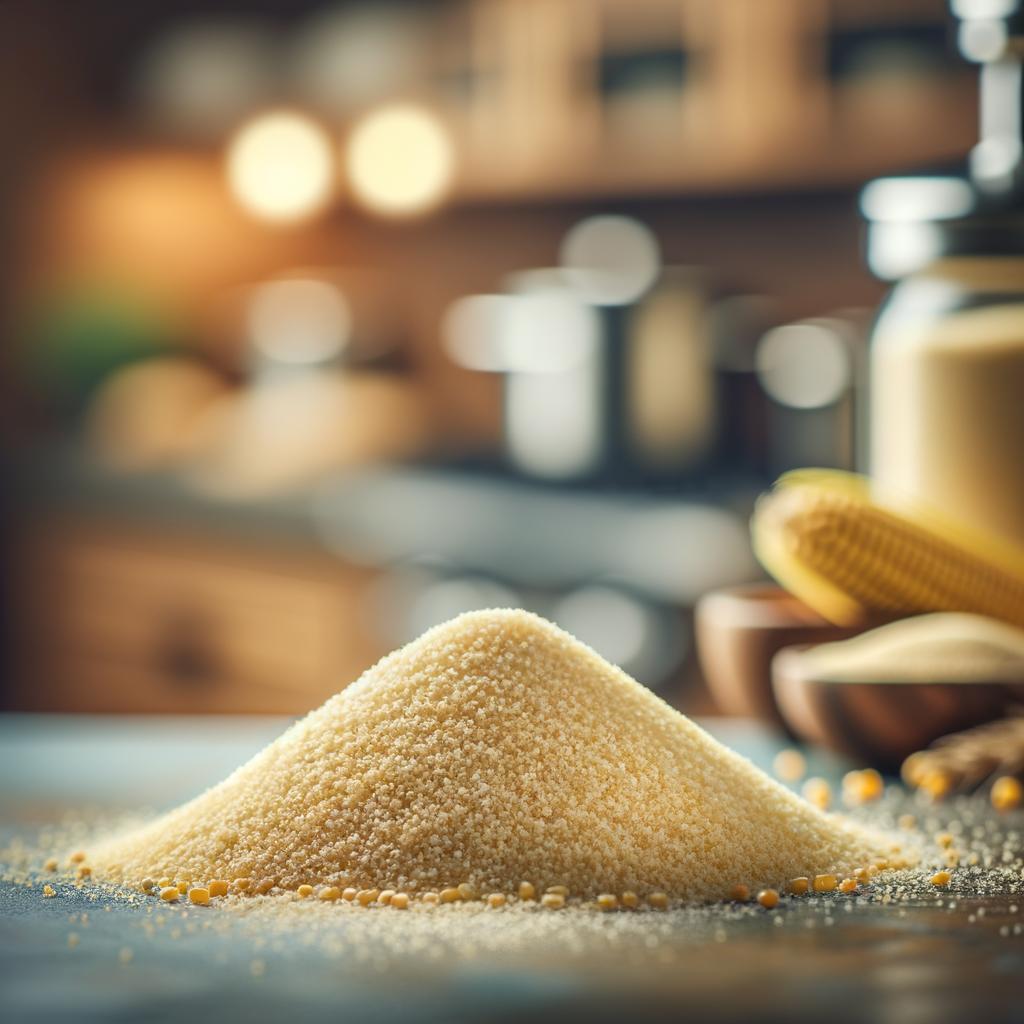Cornmeal or Millet Flour

Cornmeal
Description
Cornmeal, a staple in many kitchens around the globe, is a coarse flour made from dried corn kernels. It boasts a vibrant, golden-yellow hue that can bring a splash of sunshine to any dish. The texture of cornmeal can vary from finely ground to a more rustic, coarse grind, depending on its intended use. Its flavor is sweet yet earthy, with a slight nuttiness that adds depth to a variety of dishes. Cornmeal's unique characteristic is its versatility; it can be used as a primary ingredient in baking, as a breading, or even as a thickening agent.
Primary Uses
Cornmeal is a culinary chameleon, adapting to the needs of a multitude of dishes. It is the star of the show in Southern-style cornbread and Italian polenta, but it also plays a supporting role in many other dishes. It's used for dusting pizza stones and baking sheets to prevent sticking, and it can be used as a crispy coating for fried foods. In addition to its culinary uses, cornmeal has also been used in home remedies for skin irritations due to its mild abrasive properties.
History
Cornmeal has a rich history that dates back to the ancient civilizations of the Americas. Native Americans were using ground corn for food thousands of years before European explorers arrived in the New World. The explorers took corn and the knowledge of its cultivation back to Europe, and from there, cornmeal spread around the globe. In the American South, cornmeal became a staple food due to its affordability and versatility. There's an old Southern saying that goes, "No meal is complete without a dish of cornmeal."
Nutritional Information
Cornmeal is a good source of complex carbohydrates, providing energy for the body. It also contains essential minerals like iron, magnesium, and phosphorus. Although it's not a complete protein, it does contribute a small amount of protein to the diet. It's also high in dietary fiber, which aids in digestion. Compared to wheat flour, cornmeal is naturally gluten-free, making it a great alternative for those with gluten sensitivities.
Millet Flour
Description
Millet flour, made from the tiny, bead-like grains of the millet plant, is a lesser-known yet highly nutritious flour. It has a pale, creamy color and a slightly sweet, nutty flavor. The texture is fine and silky, similar to traditional wheat flour, but its taste is more distinctive. One of the unique characteristics of millet flour is its alkaline nature, which makes it easy to digest and beneficial for maintaining the body's natural pH balance.
Primary Uses
In the culinary world, millet flour is used in a variety of ways. It's a common ingredient in flatbreads, pancakes, and muffins, especially in parts of Africa and Asia where millet is a staple crop. It's also used in gluten-free baking as a substitute for wheat flour. Beyond the kitchen, millet is revered in Ayurvedic medicine for its digestive and detoxifying properties.
History
Millet has been a cherished grain for thousands of years, dating back to the Neolithic Era in China. In India, millet has been used for over 4,000 years, and it's deeply woven into the fabric of their culture. It's mentioned in ancient Sanskrit texts, and it's used in religious ceremonies as a symbol of prosperity and fertility. Despite its ancient roots, millet is now enjoying a resurgence in popularity due to its nutritional benefits and gluten-free status.
Nutritional Information
Millet flour is a nutritional powerhouse. It's high in protein, making it a valuable addition to vegetarian and vegan diets. It's also rich in fiber and antioxidants, and it's a good source of vitamins and minerals, including B vitamins, magnesium, potassium, and zinc. Compared to wheat flour, millet flour has a lower glycemic index, making it a better choice for blood sugar control. Its gluten-free nature also makes it a safe option for those with celiac disease or gluten intolerance.

